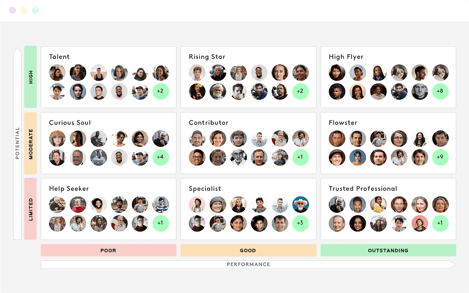Reskilling and upskilling are two trending HR concepts that we’re likely to hear a lot about in the next few years. These terms describe the need for staff to learn new skills or broaden their knowledge to match the company’s requirements. Let us explain what this means in practice.
The current context
In today’s world, there are two prevailing issues obliging many employees to carry out new functions and acquire new skills in the process.
Firstly, the job market is evolving at such a rate due to the Fourth Industrial Revolution, that we are seeing a shortage of professionals to fill certain roles. During this period, companies have been forced to revamp their culture and digitalise their internal and external processes, which has generated a new set of requirements. In turn, entirely new professions have emerged, but often without corresponding job roles. As a result, it has been down to existing employees to absorb new skills to provide these services.
Likewise, in recent months, the repercussions of Covid-19 have been so acute that companies have had to reshape their workforce, or even their business model. This has resulted in many workers assuming new responsibilities or rotating to other posts in the company.
What is reskilling?
Reskilling aims to train an employee to fill another position in the same company. Also known as professional recycling, it usually involves in-house training on a new skill set. The goal is to equip employees with the necessary abilities to adapt to new functions and in this way become more versatile.
For example, training an administrator in digital marketing would be classed as reskilling. Or a banking employee who is studying IT.
What is upskilling?
Upskilling aims to teach an employee new skills to optimise their performance. This is what is known as additional training, as it helps them excel in their current role and achieve better results. It might involve tools that help increase their productivity, social skills to boost sales, or the latest trends in their sector, etc.
An example of upskilling could be a Human Resources executive who is studying for an MBA to better understand the needs and characteristics of leadership roles.

The difference between reskilling and upskilling
These definitions help us understand the difference between reskilling and upskilling. The first aims to train an employee to adapt to a new position in the company, while the second, upskilling, equips staff with new capabilities to optimise their performance.
In practice, this means these two concepts pursue different goals, which we should take into account when designing an internal training and development program.
How technology can help improve your employees’ skills
When you are looking to improve your employees’ capabilities, technology has a number of different roles to play.
Firstly, HR software enables you to identify training needs or areas for improvement for every employee in your company. Performance reviews give you a snapshot of their abilities, thereby providing a key decision-making tool for training programs.
At Kenjo, we also have the competency matrix function, which gives an at-a-glance view of each employee’s current level.
 Kenjo Interface
Kenjo Interface
On the other hand, technology is also important for measuring the results of the training or development offered to employees. Has upskilling made this employee more productive? Is reskilling delivering the expected results? The answer to all these questions is perfectly measurable with the help of technology.
So, as we can see, technology is a crucial tool to help shape and measure the success of any reskilling or upskilling process within an organisation.

The benefits of reskilling and upskilling
The benefits of using reskilling or upskilling methods in the workplace are wide-ranging. Some of the main ones include:
Combating the digital divide
As we mentioned at the start of this article, the challenges brought by the digital revolution have forced companies to be constantly evolving. If organisations invest in training and adapting their existing talent, they have a better chance of implementing change quickly and being more competitive.
Reduced recruitment costs
Reskilling and upskilling are both investments in internal talent to fulfil business needs. This reduces hiring processes significantly, and in turn, the related costs and adjustment periods.
Retaining talent
When employees believe that the company is investing in them to improve their professional profile or give them new opportunities, it reinforces their loyalty. This makes them less inclined to accept another job offer and they tend to remain with the company for longer.
Enhancing the brand image
Offering continuous staff training enhances the company’s reputation and brand image as an employer. The company will be much more attractive to professionals in the sector and will find it much easier to attract new talent.
Promoting a learning culture
Investing in reskilling or upskilling promotes a dynamic corporate culture that is committed to continuous professional development that helps to build a culture learning that is actually effective. The result is a more versatile workforce and an organisation that is better prepared to face future challenges.


 Kenjo Interface
Kenjo Interface
